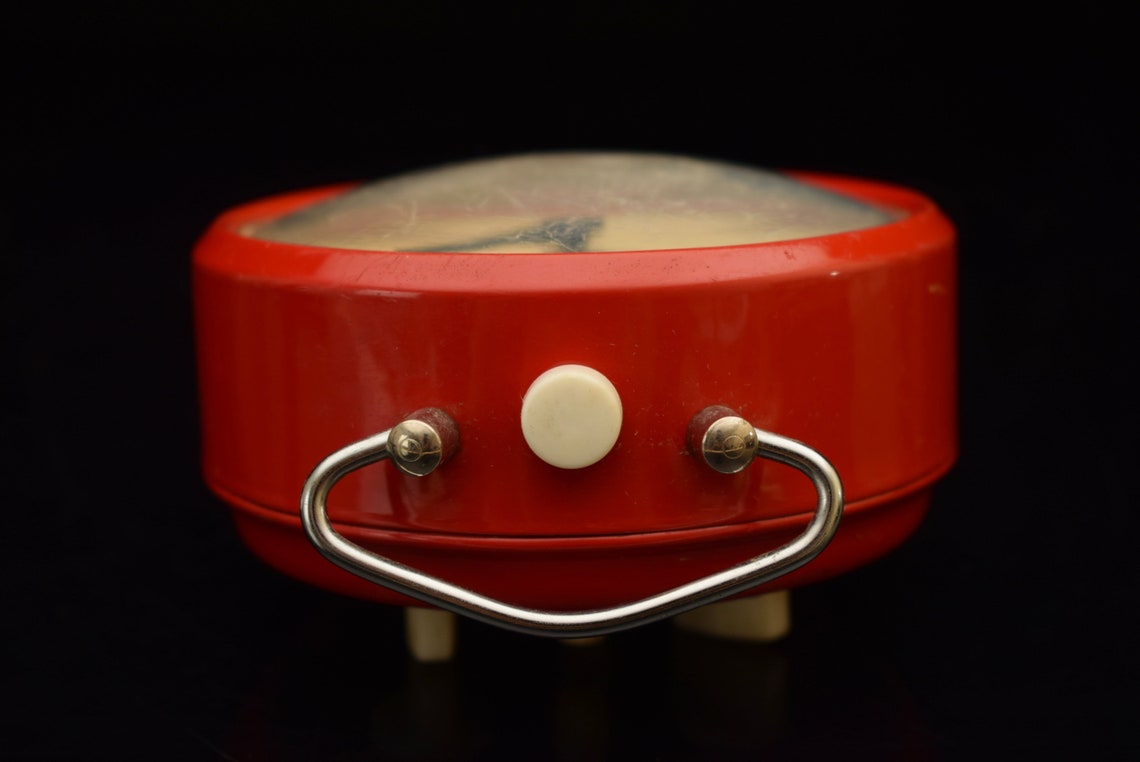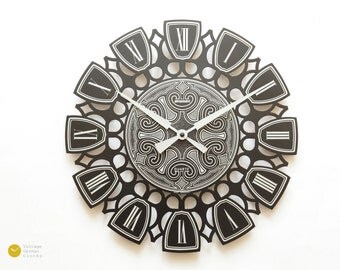

The suspension wire for these can be made from the smallest Horolovar wire, 0.0018". When you get the movement out of the clock post some photos and I can assist in identification as well as photos of individual suspension parts. The third and fourth versions had the suspension fixed to a spring loaded shock absorbing lever located near the top of the movement I think one of these is likely what you have based on the "faux" upper pendulum part design. The second version used upper and lower blocks assembled with plates and screws but still suspended from the bottom of the movement (basically the escape on these first two is at the bottom of the movement). There were four suspension designs used that I know of, the first being suspended from the bottom of the movement and the wire being crimped into the central pendulum shaft as well as to the upper suspension point. The company then continued in business until (we think) 2005 when a visit by one of our contacts found the building shuttered, and their website "dead". The business was reported to be bankrupt in 2000 however a contact in 2003 found it to still be in business and making quartz "anniversary" clocks among others. This business continued, with the clock business operated mainly under the Kundo name and electronics business under Staiger or Kundo-Staiger. The company continued in operation making a lot of other industrial timing and electronic equipment until 1992 when they merged with Kieninger & Obergfell to form Kundo-Staiger. These mechanical clocks were made into the late 1960's when they moved over to quartz models. Anyone who may have references please let me know.

I have not yet found out who designed the clocks, as this required someone with intimate knowledge of torsion clocks. In 1953 the production of these miniature torsion clocks was started, adapting a 30-hour alarm clock movement and using a disc pendulum mounted in the base of the clock (the "pendulum" seen above the base is purely decorative). This led to making plastic cases for small alarm and other novelty clocks for J. and working in electrical/electronic businesses. After WWII he rebuilt the company but changed its focus to making plastic moldings for all kind of apparatus, cases, etc. Werner Staiger (1909-1977) took over the company from his father in 1931 and continued that business, also making radio components. Georgen, Schwarzwald in 1898 and originally made industrial machinery components and hydraulics for machinery and other equipment. and then started pursuing information about the company. A couple years later I acquired a complete one in the U.S. I have been working with the Staiger clocks since 2001 when a very broken and incomplete one was given to me on a visit to Australia. Burkhard, you will find these small torsion clocks a little tricky to work with, especially the suspension units, but once they are set up they do run very well and keep excellent time if a Horolovar suspension spring is used.


 0 kommentar(er)
0 kommentar(er)
